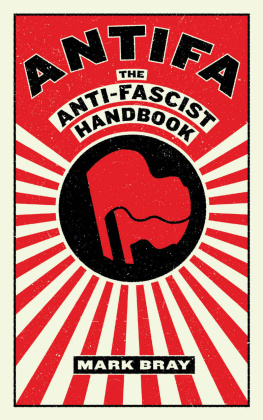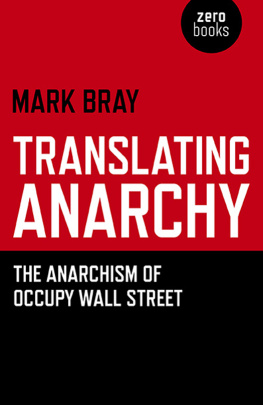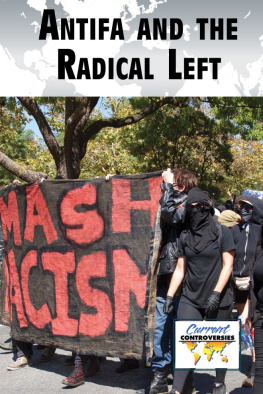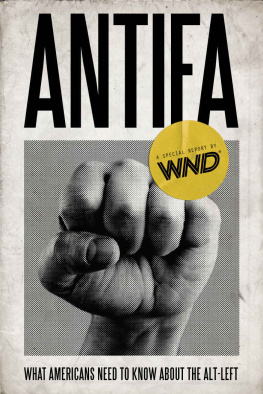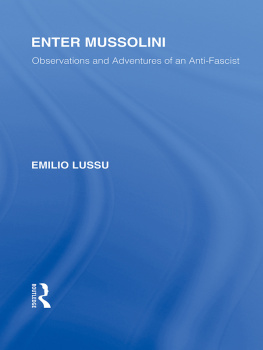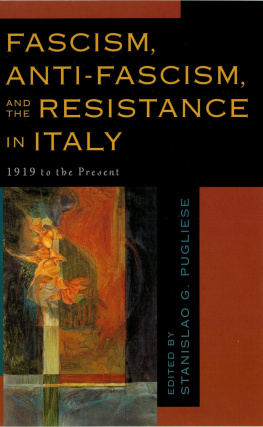INTRODUCTION
I wish there were no need for this book. But someone burned down the Victoria Islamic Center in Victoria, Texas, hours after the announcement of the Trump administrations Muslim ban. And weeks after a flurry of more than a hundred proposed anti-LGBTQ laws in early 2017, a man smashed through the front door of Casa Ruby, a Washington, D.C., transgender advocacy center, and assaulted a trans woman as he shouted Im gonna kill you, faggot! A day after Donald Trumps election, Latino students at Royal Oak Middle School in Michigan were brought to tears by their classmates chants of Build that wall! And then in March, a white-supremacist army veteran who had taken a bus to New York to target black males stabbed a homeless black man named Timothy Caughman to death. That same month, a dozen tombstones were toppled and defaced in the Waad Hakolel Jewish cemetery in Rochester, New York. Among those resting in peace in Waad Hakolel is my grandmothers cousin Ida Braiman, who was fatally shot by an employer months after she arrived in the United States from Ukraine as she stood on a picket line with other immigrant Jewish garment workers in 1913. The recent spate of Jewish cemetery desecrations in Brooklyn, Philadelphia, and elsewhere occurred under the Trump administration, whose statement on the Holocaust omitted any reference to Jews, whose press secretary denied that Hitler gassed anyone, and whose chief advisor was one of the most prominent figures of the notoriously anti-Semitic alt-right. As Walter Benjamin wrote at the apogee of interwar fascism, even the dead will not be safe from the enemy if he wins.
Despite a resurgence of white-supremacist and fascistic violence across Europe and the United States, most consider the dead and the living to be safe because they believe fascism to be safely deadin their eyes, the fascist enemy lost definitively in 1945. But the dead were not so safe when Italian prime minister Silvio Berlusconi described spending time in Mussolinis prison camps as a vacation in 2003 or the French Front National (National Front) politician Jean-Marie Le Pen called Nazi gas chambers a mere detail of history in 2015. Neo-Nazis who in recent years have littered the sites of former Jewish ghettoes in Warsaw, Bialystok, and other Polish cities with white-power graffiti know very well how their Celtic crosses target the dead as well as the living. The Haitian anthropologist Michel-Rolph Trouillot cautions us that the past does not exist independently from the presentThe pastor more accurately, pastnessis a position. Thus, in no way can we identify the past as past.
This book takes seriously the transhistorical terror of fascism and the power of conjuring the dead when fighting back. It is an unabashedly partisan call to arms that aims to equip a new generation of anti-fascists with the history and theory necessary to defeat the resurgent Far Right. Based on sixty-one interviews with current and former anti-fascists from seventeen countries in North America and Europe, it expands our geographical and temporal outlook to contextualize opposition to Trump and the alt-right within a much wider and broader terrain of resistance. Antifa is the first transnational history of postwar anti-fascism in English and the most comprehensive in any language. It argues that militant anti-fascism is a reasonable, historically informed response to the fascist threat that persisted after 1945 and that has become especially menacing in recent years. You may not walk away from this book a convinced anti-fascist, but at least you will understand that anti-fascism is a legitimate political tradition growing out of a century of global struggle.
WHAT IS ANTI-FASCISM?
Before analyzing anti-fascism, we must first briefly examine fascism. More than perhaps any other mode of politics, fascism is notoriously difficult to pin down. The challenge of defining fascism stems from the fact that it began as a charismatic movement united by an experience of faith in direct opposition to rationality and the standard constraints of ideological precision.
I agree with Angelo Tascas argument that to understand Fascism we must write its history. Yet, since that history will not be written here, a definition will have to suffice. Paxton defines fascism as:
a form of political behavior marked by obsessive preoccupation with community decline, humiliation, or victimhood and by compensatory cults of unity, energy, and purity, in which a mass-based party of committed nationalist militants, working in uneasy but effective collaboration with traditional elites, abandons democratic liberties and pursues with redemptive violence and without ethical or legal restraints goals of internal cleansing and external expansion.
When compared to the challenges of defining fascism, getting a handle on anti-fascism may seem like an easy task at first glance. After all, literally, it is simply opposition to fascism. Some historians have used this literal, minimalist definition to describe as anti-fascist a wide variety of historical actors, including liberals, conservatives, and others, who combated fascist regimes prior to 1945. Yet, the reduction of the term to a mere negation obscures an understanding of anti-fascism as a method of politics, a locus of individual and group self-identification, and a transnational movement that adapted preexisting socialist, anarchist, and communist currents to a sudden need to react to the fascist menace. This political interpretation transcends the flattening dynamics of reducing anti-fascism to the simple negation of fascism by highlighting the strategic, cultural, and ideological foundation from which socialists of all stripes have fought back. Yet, even within the Left, debates have raged between many socialist and communist parties, antiracist NGOs, and others who have advocated a legalistic pursuit of antiracist or anti-fascist legislation and those who have defended a confrontational, direct-action strategy of disrupting fascist organizing. These two perspectives have not always been mutually exclusive, and some anti-fascists have turned to the latter option after the failure of the former, but in general this strategic debate has divided leftist interpretations of anti-fascism.
This book explores the origins and evolution of a broad antifascist current that exists at the intersection of pan-socialist politics and direct-action strategy. This tendency is often called radical anti-fascism in France, autonomous anti-fascism in Germany, and militant anti-fascism in the United States, the U.K., and Italy, among todays antifa (the shorthand for antifascist in many languages). After Auschwitz and Treblinka, anti-fascists committed themselves to fighting to the death the ability of organized Nazis to say anything.

